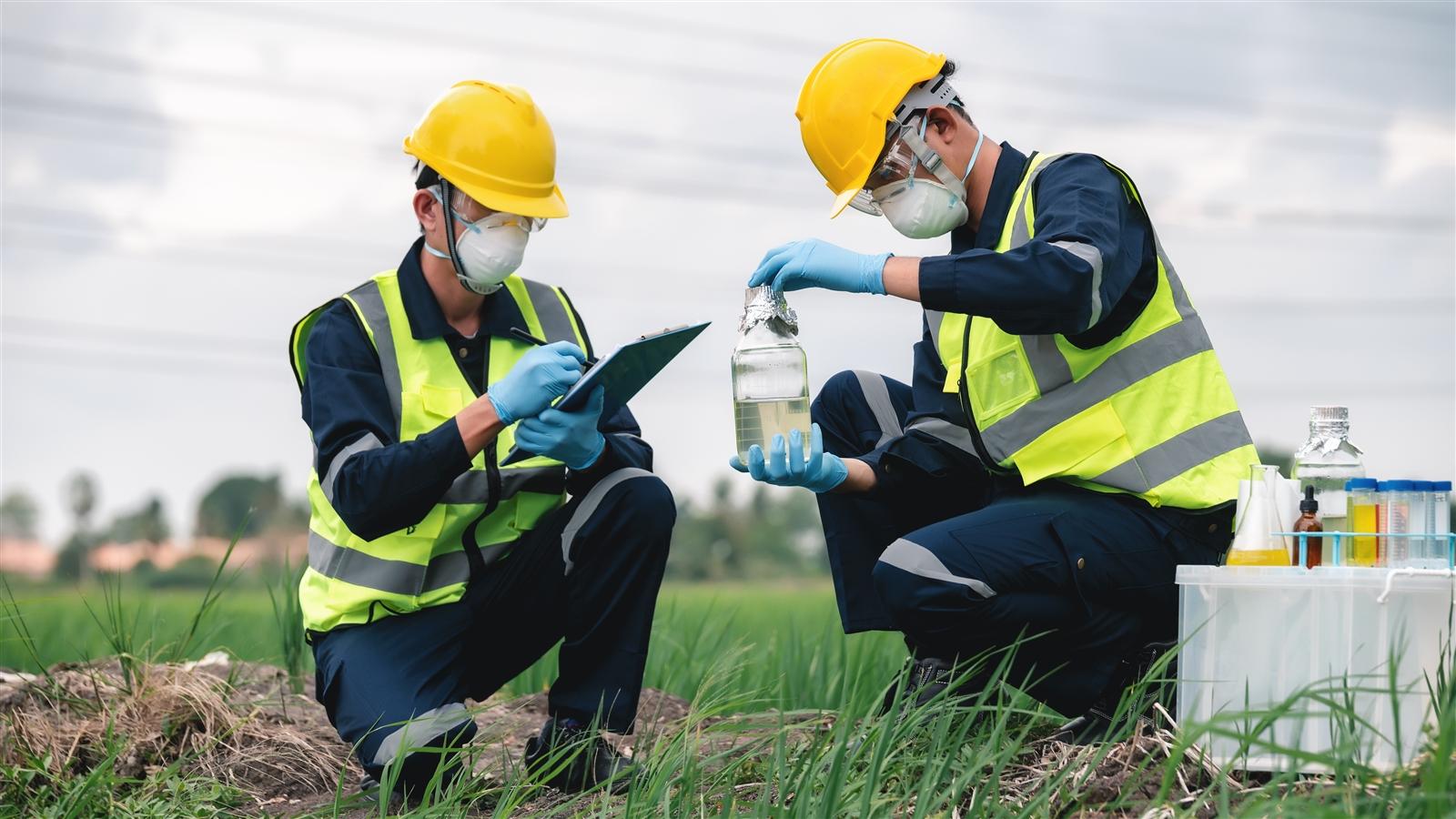Current Questions about PFAS: Interview with Expert Dr Ian Ross
Where do you see the greatest need for action in dealing with PFAS in the future?
Ross: An important action should be to immediately start restricting nonessential uses like cosmetics, dishwasher rinse aids, car waxes or toilet paper. A focus on commercial and domestic uses that result in discharges to wastewater treatment plants, would assist with preventing PFAS being concentrated in biosolids and spread on crops as fertilizer, with the PFAS potentially making its way into dairy products. To detect PFAS it can be important to apply non-target analysis, which can comprehensively assess their concentrations, as opposed to using a list of just 120 target compounds. There are potentially thousands of PFAS with several non-targeted chemical analytical methods available to detect them.
In your opinion, are the European regulations on PFAS moving in the right direction?
Ross: European regulations are heading in the right direction as they combine restrictions on products which contain PFAS, based on essential use. They also have regulations focused on the sum of all PFAS detected in water, which should be below 0.5 micrograms per litre. They are still assessing which non-target methods are viable for use, with a combination of chemical analytical tools likely being most effective and economic when used in a logical sequential order, to screen and identify PFAS. There can be a broad spectrum of PFAS, with multiple physical and chemical properties, some extremely toxic and others used as therapeutic drugs. So individual PFAS need to be assessed and regulated considering what is known about their properties.
What do you think about restrictions on PFAS uses?
Ross: If there is an essential need for PFAS, there are no effective alternatives and they are used not in a dispersive manner (such as firefighting foams), then there’s a question regarding restrictions until alternatives are found. However, if the alternatives are also extremely persistent, such as siloxanes, it seems wise to avoid them. The essential use concept is critical for application of PFAS restrictions, with several uses potentially having limited environmental impact. However, making PFAS manufacturers responsible for lifetime management costs associated with use and disposal of their products, could stimulate innovation to switch to less toxic, biodegradable, natural alternatives. Many products contain PFAS where credible alternatives exist, for example outdoor, waterproof fabrics can be effective using natural waxes.
What about contaminated soil? Are there affordable methods for treating soil impacted with PFAS?
Ross: There are several types of remediation technologies available to manage PFAS impacted soils. These include thermal approaches which look promising, but expensive, with air emissions needing careful assessment using non-target chemical analyses. The use of soil stabilization can be a pragmatic approach to preventing PFAS leach from soils, but long-term studies have not been done to show that a range of PFAS remain stabilized over future years. Soil washing can be applied, but comprehensive assessments of the range of PFAS associated with soils has not yet been done to evaluate success. The water treatment technologies associated with soil washing may need to involve several approaches to treat a range of PFAS.
What are the current approaches for treating PFAS impacted water?
Ross: There are several approaches for treatment of a broad range of PFAS, in the spectrum, such as nanofiltration or reverse osmosis. This can be expensive and creates a concentrated waste, as a rejectate, that then needs to be treated to destroy the PFAS it contains. This can be achieved using a range of approaches in a treatment train. Several water treatment technologies are able to remove a specific but potentially limited range of PFAS, such as activated carbon, with ion exchange resins removing a broader array of PFAS. However, these types of treatment adsorptive approaches have not yet been assessed to remove the full spectrum of PFAS, that are anticipated to be removed using reverse osmosis.
Our team includes world renowned experts developing cutting edge water treatment solutions, whilst remaining as consultants offering impartial advice on a range of approaches to address differing PFAS.
What is CDM Smith doing in the field of PFAS?
Ross: CDM Smith is pioneering on multiple fronts to assist with PFAS management with over 60 funded research and development projects. For example, we were the first to apply combinations of innovative technologies such as foam fractionation, to concentrate a range of PFAS before they are destroyed using electrochemical oxidation. Further treatment trains using membrane filtration, foam fractionation and destructive treatment using hydrothermal alkali (HALT) are being developed. Our technical team members were the first to commercially apply non-target methods for site investigations and develop an understanding of non-aqueous phase solid (NAPS) phases of PFAS, as liquid crystals, which adsorb to the interior of fire suppression systems.
We have four US Department of Defense funded projects, focused on the impacts from PFAS to concrete surfaces, researching treatment approaches and assessing the reasons why concrete surfaces so much PFAS. We have recently characterized the PFAS concentrating in biosolids at wastewater treatment plants across the US and have developed patented approaches to remove and concentrate the regulated PFAS by simply adapting wastewater treatment plant operations. Other works include searches for sources of PFAS using multiple different analytical tools to fingerprint PFAS.

A global approach to PFAS, coupled with our deep bench of accomplished technical experts, keeps CDM Smith on the cutting edge.




